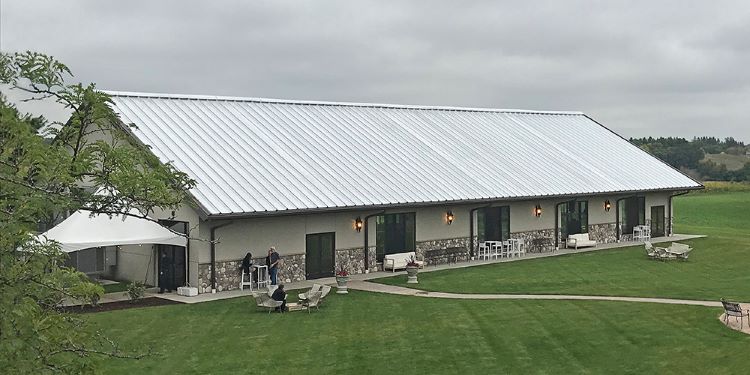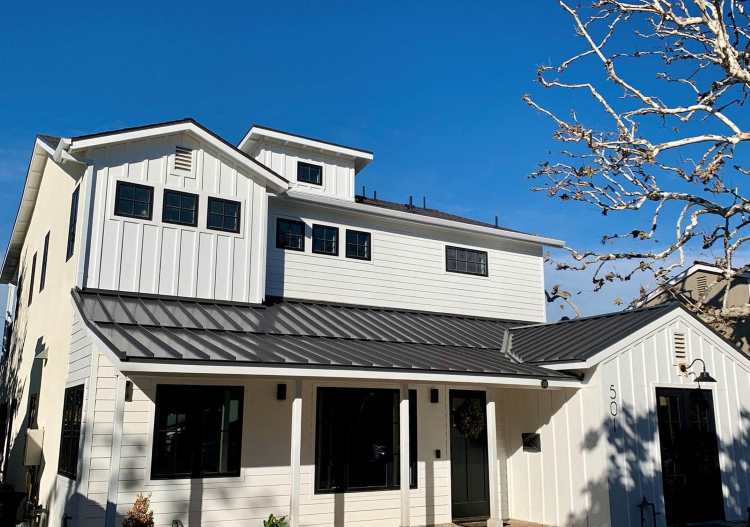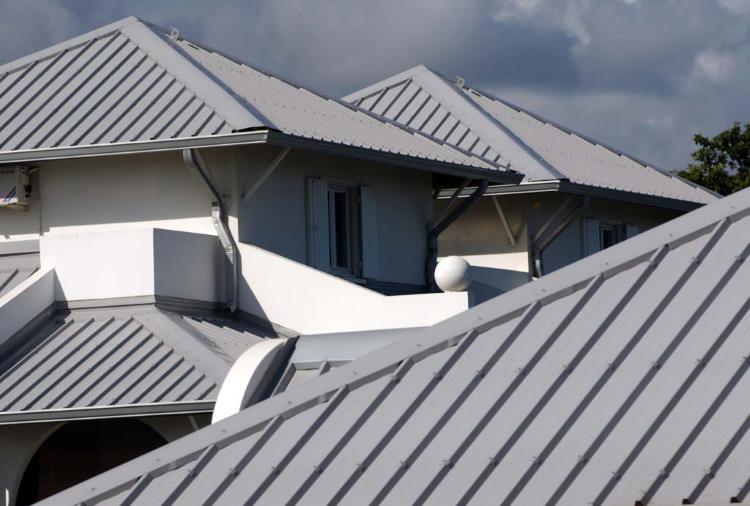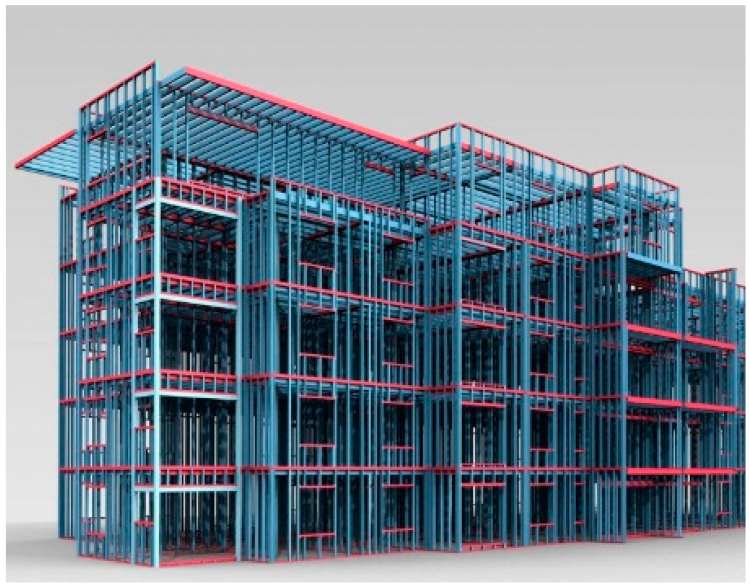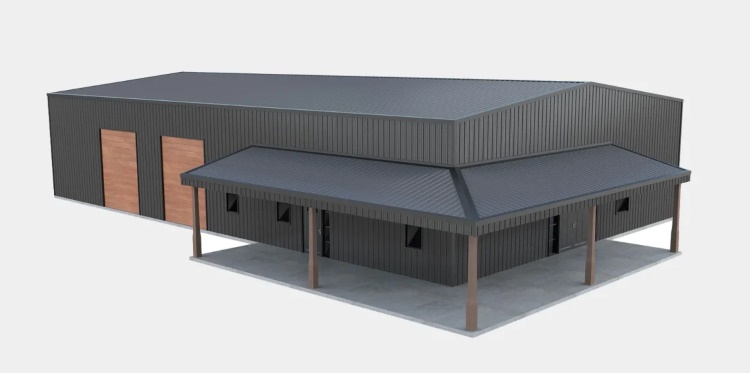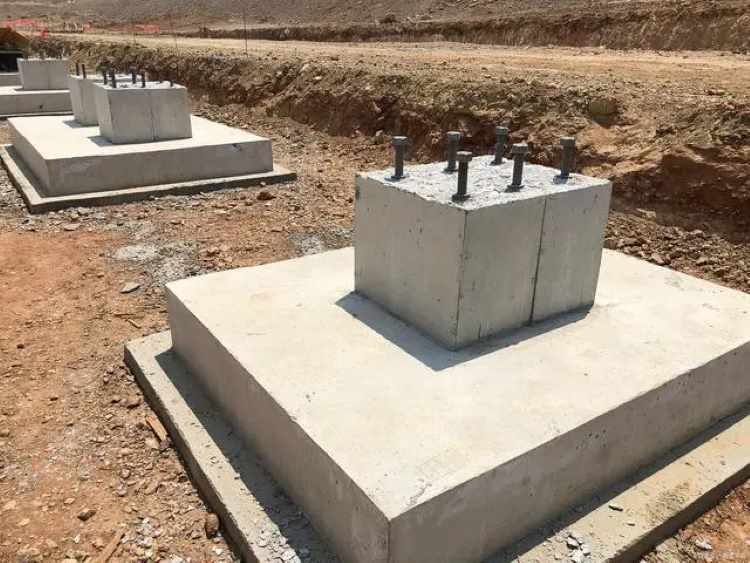Steel Structure Construction Site Safety Guide
No Pics.
A guide to safety on modern construction sites

Metal Building Insulation (MIP)
Introduction
Accident Statistics
Workers between the ages of 25 and 34 were most likely to be injured
Workers injure their backs more than any other part of their body
Most cases cause workers to miss at least 31 days of work
1 out of 10 construction workers will be injured this year
Common Reasons for Job Site Injuries
Incorrect or reckless use of machinery and tools
Trench and scaffold collapse
Failure to use protective equipment
Repetitive Motion Injuries
Repetitive motion injuries occur when muscles are overworked. They can be the result of many things, such as heavy lifting or something as simple as hammering a nail. To avoid such injuries, you should always be sure to lift with your legs, not your back, and to take breaks when you are feeling too much soreness in any particular muscle.
Tool Misuse
Incorrect use of tools and machinery is one of the most avoidable causes of accidents there are. Safeguarding against this is as simple as using equipment for what it was designed for. Recklessness is also a major cause of injuries that are avoidable. Always be alert when on the job, and be aware of yourself and your coworkers.
Trenches
Trenches have been known to collapse and are a major cause of injuries and fatalities. There are quite a few safety regulations for trenches, which will be discussed more in-depth later on. Scaffolding has also been known to collapse, and they are where most falls occur. Safety regulations for scaffolding are also in place, which will be discussed more in-depth later.
Electrical Sources
Whenever there is an open source of electricity, caution must always be used. Wires must be sorted, and workers should wear the required protection when dealing with them.
Failure to use protective equipment is the most avoidable cause of injuries there is. Workers should always wear helmets, safe working shoes, and earplugs when working loud equipment, among other things.
Construction Site Rules & Regulations
There are too many to list in full, but some examples are:
- A fire escape plan must be in place. This will be approved by the fire department. The site must be accessible to fire department equipment, including trucks and hoses.
- Workers should dress properly. The basic attire is a basic shirt and long pants. Safety equipment includes hard hats, glasses, earplugs, gloves, and work boots.
- Long hair should be tied back, and jewelry should never be worn.
- Electric tools should be unplugged when not in use or if they need parts changed like a blade or bits. Blade guards should be set, and tools must be carried properly to avoid injury to yourself and others.
- Lifting should be done properly. Avoid lifting with your back and instead, use your legs. Never carry something too heavy alone, even if you're capable. Have a coworker help you.
Safety Equipment
- Hard hats, helmets, or other forms of protective headgear. There are very few times when it's okay to go without headgear.
- Shoes should provide safety if you step on a nail or something falls on your foot.
- Safety glasses should always be ready to use, especially when using power tools.
- Proper gloves should be worn according to the task at hand.
- Earplugs are necessary when loud machinery is in use.
- If chemicals are present, masks should be worn.
Safety Risks
- Scaffolding
- Fall protection
- Ladders
- Stairways
- Trenches
- Cranes
- Hazard Communication
- Forklifts
- Head Protection
There are an estimated 20,500 accidents that can be avoided by simply doing the following:
- Scaffolds must be structurally sound, well capable of carrying their own weight and more and be built on solid footing.
- Unstable objects should not be used to support the scaffold.
- Scaffolds must not be built, altered, moved, or dismantled without the supervision of a capable person.
- Any repair necessary to the scaffold must be done immediately.
- Guardrails, mid rails, and toeboards are mandatory.
- Platforms must be tightly planked and built with appropriate material.
- A capable person should inspect the scaffold once finished and at designated intervals.
- All ropes must be protected from sources of heat.
- Workers must be educated about the proper use of scaffolds.
- Scaffolds must be at least 10 feet from electric power lines.
Falls are consistently ranked as the biggest cause of fatalities in the construction industry each year. Many factors are involved in falls, including unstable footing, failure to use protective equipment, and human error. Using guardrails, fall arrest systems, safety nets, covers, and restraint systems can help prevent deaths and injuries from falls.
- Ariel lifts and elevated platforms are a safe alternative to other elevated working surfaces and should be considered.
- Erect guardrails with toeboards with warning lines or install control line systems for workers near the edges of roofs and floors.
- Cover any holes in the floor.
- Use safety nets or other personal fall arrest systems, such as body harnesses.
Ladders and stairways are other sources of common, avoidable injuries that plague construction workers. There are an estimated 25,000 injuries caused by falls on ladders and stairways.
To prevent falls off ladders:
- Always be sure to use the correct ladder for the job.
- Always inspect the ladder before use to determine if there are any faults or damage to the ladder. Also, make sure the ladder is not greasy or slippery.
- Ladders must be long enough to reach the working area safely.
- Always mark defective or damaged ladders clearly.
- Never go over the ladder's weight limit.
- Avoid using metal ladders when near any source of electricity.
- Keep stairways clear of any impediments or debris.
- Always make sure that stairways are dry and not slippery.
- Have treads cover each step and the landing.
- Handrails are always encouraged.
This is avoidable by simply doing the following:
- Never under any circumstance enter an unprotected trench.
- Always put in place a protective system for trenches 10 feet deep or greater.
- For trenches, 20 feet deep or greater, have a professional engineer design a protective system for it.
- Always provide an exit to a trench within 25 feet of lateral travel for workers in case of emergency.
- Keep spoils two feet back, at least from the edge of a trench.
- Have a capable person inspect a trench before entry and after any hazard-increasing event such as a rainstorm or earthquake.
- Their strict regulations regard trench slopes. These can be found in the OSHA Technical Manual, Section V, Chap. 2, Excavations: Hazard Recognition in Trenching and Shoring.
Cranes can cause significant injuries if not inspected or used properly. Injuries often occur when a worker is hit by an overhead load or is within a crane's swing radius.
Crane injuries can be avoided by doing the following:
- Inspect crane controls before use to insure that they're working correctly.
- Inspect wire ropes, chains, and hooks for damage.
- Know the weight of the load you want the crane to lift, and ensure it is within the crane's rated capacity.
- Test the load by raising it a few inches to confirm balance and the brake system's effectiveness.
- Inspect all rigging prior to use.
- Extend outriggers fully.
- Never move loads over workers.
- Barricade accessible areas that are within the crane’s swing radius.
- Watch for and maintain a safe distance from electrical lines.
Hazard Communication
- Maintain a thorough list of chemicals that account for every single chemical in the facility.
- Have Material Safety Data Sheets (MSDS) on each and every one of those chemicals.
- Make that knowledge easily accessible to every worker.
- Make sure workers understand how to read the MSDS.
- Follow the manufacturer's instructions when dealing with chemicals.
- Train workers on how to properly handle every chemical that is to be used.
- Provide spill cleanup kits where chemicals are stored and used.
- Have a spill control plan written.
- Train workers to properly dispose of and clean up chemicals. Also, be sure to train them on how to protect themselves from chemicals.
- Store chemicals safely and responsibly.
Powered Vehicle Safety
- Anyone who drives a forklift should be trained to do so properly.
- Drivers should be over 18 years of age before they are allowed to operate a forklift.
- Keep forklifts properly maintained.
- Do not modify forklifts without the approval of their manufacturer.
- Examine forklifts before use for defects.
- Always follow safe operating procedures when using forklifts.
- Drive safely, and never exceed 5 mph.
- Horseplay should not be tolerated.
- Do not handle loads that exceed a forklift's maximum capacity.
- Remove defective forklifts from service immediately.
- Always wear your seat belt when operating a forklift.
- Assure that the reverse signal is working and audible.
Safety Checklist
Ensure a Safe Place of Work
- Can workers reach their area of work safely? Are roads, passages, staircases, and ladders in good condition?
- Are there guard rails in place on all scaffolds and other elevated platforms?
- Are all working structures stable and adequately braced?
- Are all holes guard railed and clearly marked to prevent falls?
- Are all work areas free from impediments and obstructions that workers may trip over?
- Is the site clean? Are materials stored properly and safely?
- Is waste being disposed of properly?
- Is the working area adequately lit?
Scaffolding
- Were all of the scaffolds built, modified, or dismantled by a capable person?
- Do all scaffold platforms have a safe way of accessing them?
- Are all scaffolds secure and structurally sound? Are they inspected before use every time?
- Are there adequate guard rails in place to prevent accidental falls?
- Are the platforms fully boarded and arranged to avoid tripping?
- Are there notices in place to prevent working from using incomplete or defective scaffolds?
- Does a capable person inspect the scaffolds at least weekly?
- Has all equipment been erected by a capable person?
- Is fixed equipment properly connected to the structure against which it operates?
- Are precautions in place to prevent workers from being struck by moving equipment?
- Are operators of said equipment trained and competent to use this equipment?
- Is an adequate supply of supporting materials made available before excavation work begins?
- Are the materials strong enough to support the sides?
- Are workers safe when placing supports? Do workers have to lay support while in an unsupported trench?
- Are the walls of the excavation sloped? If so, is the angle correct so as to prevent collapse?
- Is there safe access to and from the excavation?
- Are there guard rails in place to prevent works from falling in?
- Are though guard rails securely?
- Does the excavation affect any neighboring structures?
- Is an excavation inspected by a competent person before each shift?
- Is an excavation inspected by a competent person after each accidental collapse or any other event that may have affected its stability?
- Is there protection in place to prevent workers from falling off?
- Is there protection in place to prevent materials from falling off?
- Are harnesses available if needed?
- Are people excluded from below when the roof is being worked?
- If not, are there precautions to prevent debris from falling on the below workers?
- Can working in confined spaces be avoided?
- Has a risk assessment been carried out?
- Is a Safe System of Work in place and being worked to? Has the space been monitored for possible toxic pathogens before entry?
- Is continuous monitoring necessary while working in the space?
- Are workers both trained and medically fit?
- Are there rescue measures in place?
- Can they be put into use immediately?
- Are the correct ladders being used when called for?
- Are all ladders used in good condition?
- Are all ladders secured before use?
- Do all ladders reach the intended height sufficiently?
- Are all ladders being used correctly?
Tools and Machinery
- Are the right tools being used for the project?
- Is the correct equipment being used for the project?
- Are operators all trained and capable of using all equipment and tools provided?
- Are all tools and equipment inspected properly before use?
- Have emergency plans been developed?
- Are workers aware of the plans?
- Is there a working way to raise an alarm?
- Are there adequate escape routes, and are they kept clear?
- Have all chemicals been properly identified?
- Have the risks involved with chemicals been properly assessed?
- Are precautions in place in case of accidents?
- Is protective equipment provided to the workers? Do they use it?
Additional Construction Site Safety Resources
Improve Job Site Safety with Lean Construction
Lean construction is a methodology that aims to improve the efficiency and effectiveness of construction projects while also enhancing construction site safety. Here are several ways in which lean construction practices can contribute to improved safety on construction sites:
Collaborative Planning: LC encourages collaboration and communication among project stakeholders, including contractors, subcontractors, and workers. When teams work together in the planning phase, they can identify potential safety hazards and develop strategies to mitigate them.
Efficient Workflows: LC seeks to eliminate waste in construction processes, which can help reduce congestion on the construction site. A more organized and efficient workflow can lead to fewer opportunities for accidents or injuries caused by workers rushing to meet deadlines.
Visual Management: LC often employs visual management techniques to make safety guidelines and potential hazards more apparent. The use of visual cues can help workers quickly identify safety issues and take corrective actions.
5S Workplace Organization: The 5S methodology (Sort, Set in order, Shine, Standardize, Sustain) is a lean tool that promotes a clean, organized, and well-maintained workplace. This approach not only improves efficiency but also reduces the likelihood of accidents caused by clutter or disorganization.
Reduced Rework: Lean practices aim to minimize errors and rework, which can be a source of safety issues. Fewer defects and rework mean that workers are less likely to be exposed to hazardous conditions resulting from mistakes.
Visual Workplace Safety: Implementing visual cues and safety signage throughout the construction site can help remind workers of potential hazards and best practices for safety.
Waste Reduction: By reducing waste and inefficiencies, lean construction can also reduce the likelihood of accidents and injuries associated with the unnecessary handling and disposal of materials.
In summary, lean construction principles can have a significant positive impact on construction site safety by promoting a culture of collaboration, organization, efficiency, and continuous improvement. These practices help identify and mitigate safety hazards while creating a safer and more productive working environment.
Would you like to see more information and images of ZHM’s Metal Steel Structure Construction Site Safety Guide ? Visit our Photo Gallery.
HOW CAN WE HELP YOU?
ZHM’s world-class team — together with our raw material suppliers and subcontractors — works to solve your most challenging design, engineering, farbrication or construction issues.
Contact ZHM by telephone at +86 135-8815-1981 (wechat and whatsapp) or send us your questions via email to info@zhmsteelworks.com

